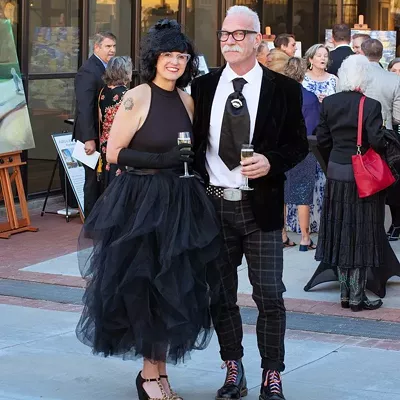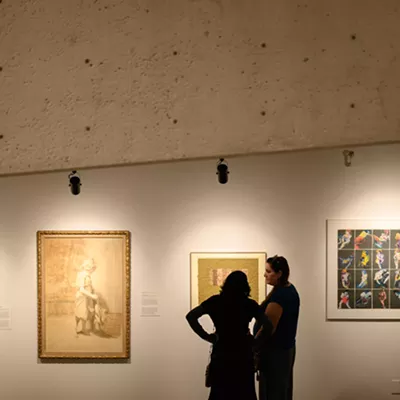In 1972, architect Bob Swaim designed a townhouse development in an old pecan orchard on East Glenn Street near the Rillito River.
It would have been cheap, easy and perfectly legal for Swaim to fell the trees on the land. But he didn't. Instead, he saved as many as possible and incorporated them into his design. More than 40 years later, their leafy boughs still shade the houses; the walking paths in between are leafy bowers.
Preserving the vegetation was not the only thing Swaim did to counteract the harsh desert climate. He situated the houses on a north- south axis, sparing them from the sun's heat from the east in the mornings and from the west in the afternoons. And though he built the houses of modern concrete, he gave a nod to the desert's building traditions by using concrete blocks in the shape of adobe bricks.
The modest – and radical – Orchard River Townhomes won the designation of Tucson Architectural Landmark in 1999, in a contest co-sponsored by the School of Architecture and the Tucson Weekly. The complex made the Modern 50 list of the Modern Architecture Preservation Project (MAPP) as one of "50 exceptionally significant examples of mid-century modern architecture in Tucson."
Swaim, now 84 years old, is being feted during Tucson Modernism Week. The festival of architectural tours, events, movies and lectures celebrating all things mid-century modern, kicks off Friday and continues through Saturday, Oct. 11. Swain will give a free lecture about his 1960s and '70s buildings next Thursday, Oct. 9. This Sunday on the Home Tour he will open his own much-photographed home to the public for the first time.
"Swaim designed some truly unique and distinctive buildings in Tucson," says architect Chris Evans of MAAP. Swaim's house is one of them: it's made of concrete, cast into repeating eight-foot modules.
Modernism Week honors the exuberance and playfulness of Tucson's own mid-century modern movement. A bus tour on Saturday guides visitors down Miracle Mile's neon highway, where old-timey vernacular motels still sizzle with brightly colored signs. An exhibition showcases the prized furniture of the era, while displaying the joyous brightly colored street-smart abstractions of Jeffrey Jonczyk, a painter of today whose work meshes with the spirit of mid-century.
Staged by the Tucson Historic Preservation Foundation, the week of events also have their serious side, and take a look at what architecture can do to improve human life in a city. Swaim could be just as playful as any of his contemporaries—witness the upside-down pyramid bank building he created for Western Savings and Loan at Wilmot and Speedway. But he also made public buildings that benefit the community. His El Rio Neighborhood Center on West Speedway continues as a hub of activity and services in a poor part of town, and his preservation of nature at the expense of greater profit still stands a model of architectural responsibility.
Swaim's firm is still going, led by his son Phil, and Bob Swaim is highly regarded in the Old Pueblo architectural community. He did not achieve quite the fame of some of Tucson's great architectural modernists, among them Nicholas Sakellar, Arthur Brown and Judith Chaffee. But the late great Chaffee, champion of sensible design in the desert, paid him the ultimate compliment: She made her home in Swaim's Orchard River Townhomes.











